|
1. Ingredients that prevent heart and brain (Cerebrovascular) disease
Grated Daikon radish Isothiocyanate contained in Daikon radish breaks down fat sticking to the inside of the blood vessel, preventing the hardening of the artery. Grating Daikon radish increases isothiocyanate, compared to Daikon radish as it is. 2. A side dish that improves High Blood Pressure Potato salad Potassium is a type of minerals that is rich in green vegetables, fruits and sea vegetables. Potato contains a lot of potassium and the biggest feature is that the amount of potassium doesn’t decrease very much by cooking with heat. Potassium in most vegetables flows out by cooking with heat, but in the case of potato, only 17 % of potassium flows out by cooking with heat and more than 80 % of potassium remains. 3. Ingredients that decreases visceral fat Wakame seaweed Fucoxanthin contained in Wakame seaweed transforms the white fat storing energy to the brown fat that burns energy, decreasing visceral fat. 4. A Chinese dish that rejuvenates the blood vessel Sauteed liver and garlic chives It is known that there are 3 nutrients that rejuvenate the blood vessels, which are vitamin B6, vitamin B12 and folic acid. Liver is rich in all these 3 nutrients. When you intake all these 3 nutrients together, at first vitamin B6 repel the half of Homocysteine that damages the blood vessel and then vitamin B12 and folic acid repels the remaining half of Homocysteine. If it is liver, any of pork, chicken and beef is fine. 5. How to bathe in order to rejuvenate the blood vessel To clasp and unclasp your hands while soaking in the bath tab NO is a substance to soften the blood vessel. When you clasp and unclasp your hands, blood flow quickly increases, that stimulates the wall of the blood vessel and a lot of NO is secreted, making the blood vessel elastic. When you do this while soaking in the warm bath tab, the blood flow increases more and more NO is secreted. It is recommended to repeat 100 times of clasping and unclasping your hands with one third of the strongest clasp while soaking in the bath tab.
1 Comment
2. A sign you can see the hardening of the artery in the heart
According to a follow-up survey of 264 elderlies conducted for 10 years in US, people who had wrinkles in their earlobe had 2 times higher heart diseases development rate, compared to people who didn’t have. Since the earlobe originally has a low number of the artery running around, once hardening of the artery happens, that promotes poor nutrition, making the wrinkles in the earlobe deep (Fig. 1). It is thought that the degree of hardening of the artery in the earlobe is almost the same as the one in the heart. That is why the wrinkles in the earlobe act as a barometer of the hardening of the artery in the heart. Related article: Dangerous signs of diseases in summer easy to overlook - Wrinkles - 3. A hormone that stops the aging of the heart A hormone that rejuvenates the artery of the heart is GLP-1. The cause of stroke is plaque accumulated in the artery of the heart. GLP-1 removes plaque and rejuvenates the artery. GLP-1 is secreted more when the number of chewing increases. So hard food is good to increase the secretion of GLP-1 like dried squid. 4. There is a hormone that protects the heart. Recent researches have shown that the hormone that strengthens the heart is omentin. In a recent research, when they cause the heart of a normal mouse to have stroke, the muscle of the heart becomes necrotic. But in the case of the mouse that secretes a lot of omentin, the area that becomes necrotic is much smaller (Fig. 2). That means, even though the blood flow to the heart muscle stops, the heart keeps working. It has tuned out that intake of olive oil tends to increase omentin. Omentin is also secreted from visceral fat, but it is not secreted from the visceral fat of overweight individual. Olive oil is thought to have the effect to suppress obesity. 1. There is nutrition that keeps the heart young without exercises
According to a report published on British Journal of Sports Medicine in 2016, a survey about associations of specific sports and exercises with heart diseases mortality was conducted on 80000 British adults over the age of 30 and it turned out that a specific sport lowered the risk of death due to heart diseases. Q. What is the exercise lowering the risk of death due to heart diseases most? (1) Running (2) Swimming (3) Tennis (4) Aerobics 4th is (1) Running: When the risk of death due to heart diseases without any exercises was set to 1, the risk with running was the same. 3rd is (4) Aerobics: The risk was lowered by 36 %. 2nd is (2) Swimming: The risk was lowered by 41 %. 1st is (3) Tennis: The risk was lowered by 56 %. The reason has not become clear yet, but it is thought that muscle strength to stop and go, and grasp strength to keep swinging a racket prevent heart diseases. But please be at ease. There is a possibility to keep your heart young without playing tennis. The ages of hearts of 72 years old ex-pro tennis player who trained and played tennis at present as well and 6 people who lived in an area and didn’t do any exercises were checked. 72 years old ex-pro tennis player: -4 years old 74 years old ordinary male 1: -18 years old 62 years old ordinary male 2: -26 years old 67 years old ordinary male 3: more than his age 73 years old ordinary male 4: -17 years old 71 years old ordinary female 5: -3 ? years old ordinary female 6: more than her age What keeps their hearts young? People living in the area use ironware because the area is famous for the production of ironware. So the nutrition that keeps your heart young is iron. Taking sufficient iron activates mitochondria that creates energy, increasing the function of the heart. A cup of miso soup with tofu and spinach contains about 0.78 grams of iron, but if it is cooked with ironware, the amount of iron becomes 4.43 mg, which is about 6 times more. How to check whether or not iron is sufficient There is 3-5 grams of iron in our body, which is the same as a piece of nail. If you pull your lower eyelid down, the inside layer should be a vibrant red color. If it is a very pale pink or yellow color, this may indicate that you have iron deficiency. Wrinkles
One of the causes of wrinkles is UV. The stratum corneum gets thicker to block UV. The thickened stratum corneum gets dry and becomes wrinkles. But if you avoid UV too much, there is a possibility that the bone could be weakened. Our body makes the bone from vitamin D and calcium. Vitamin D is made by soaking in the sun. That is why if you avoid the sun light, you can’t make the bone in your body. You can prevent wrinkles and spots and also protect the bone by absorbing UV from the palms of your hands because the palms don’t have melanin pigments that block the UV so that vitamin D can be made efficiently in a short time. Sufficient UV can be absorbed by soaking your palms in the sun for 15 minutes a day. Wrinkles that could be a sign of dangerous diseases Wrinkles made in the ear lobe could be a sign of heart diseases (Fig. 1). The ear lobe doesn’t have many blood vessels so that the ear lobe is easily affected by hardening of the artery (arteriosclerosis) and wrinkles are made by poor blood circulation due to hardening of the artery. The ear lobe is one of rare spots in our body where we can check the condition of our blood vessel. It is said that wrinkles on the forehead are also made by hardening of the artery, but they are made by UV as well, so the ear lobe that is not easily affected by UV is more useful to check the condition of the blood vessel. According to a survey conducted on 108 people whose ages were 54-74 year old for 8 years in Chicago University, people who had wrinkles in the ear lobe tripled the risk of heart diseases. Eating blue back fishes is recommended to prevent hardening of the artery because EPA contained in blue back fishes improves the blood flow and helps prevent hardening of the artery. Stiff neck and shoulders In summer, we tend to stay in an air-conditioned room and keep cooling our body. That stiffens the blood vessel and the muscle, causing soreness around the neck and shoulders. But that can be a sign of heart diseases. The organs don’t have a lot of nerves not to affect our daily life. For example, if the heart have a lot of nerves, we have to react to every heartbeat. Instead, the spine where is the same level as the organ detects pain or other symptoms. The level of the heart at the time of fetus is the same as the shoulder, but it lowers as we grow, so at the time of pain in the heart, we feel the pain around the shoulder (Fig. 1). We have to know that at the beginning stage of heart attack, the shoulder gets painful, especially the left shoulder close to the heart often gets painful (Fig. 2). How to distinguish heart diseases from a shoulder joint problem When you move your shoulder, if the pain gets worse, it is more likely to be caused by stiff neck and shoulders, and if the pain doesn’t change, it can be caused by heart diseases. The young heart has a lot of capillaries and the blood circulation is good so that sufficient nutrition is delivered and the heart can beat vigorously.
But the number of capillaries decreases with age so that the nutrition delivered to the heart also decreases, making the heart beat weak. Ignoring this condition can cause serious heart diseases. But recently a substance to stop the aging of heart has turned out. The substance is GLP-1. According to a research published on The New England Journal of Medicine, people who took GLP-1 for 3 and a half years had 22% less development of heart diseases that people who didn’t. Therefore, GLP-1 can be expected to prevent the aging of the heart and keep vigorous heartbeat. GLP-1 is a hormone secreted from the small intestine. The keys to increase the secretion of GLP-1 are: (1)What to eat (2)When to eat (1) What to eat The important things of what you eat are foods containing proper amount of sugar and insoluble dietary fiber, which stimulates the small intestine and promotes the secretion of GLP-1. The foods containing proper amount to sugar and insoluble dietary fiber are root vegetables such as carrot, burdock, potato, sweet potato, yam, etc. Different from carbohydrate, the sugar contained in root vegetables is appropriate to stimulate the small intestine and root vegetables are rich in insoluble dietary fiber as well (Fig. 1). (2) When to eat The important thing of when to eat is eating 3 meals a day at the same time. This makes the small intestine stimulated at the same time, leading to more secretion of GLP-1. GLP-1 originally got attention as a hormone lowering blood sugar and is used as the medication for diabetes. But it has turned out that GLP-1 protects the blood vessels of the heart as well. 2 functions of GLP-1 (1) It was said that lost capillaries wouldn’t increase again, but according to various researches, GLP-1 can increase capillaries. (2) It was also said that plaque, which rapture causes heart attack, created once in the blood vessel wouldn’t be removed, but GLP-1 can decrease plaque, prevent the hardening of the arteries and protect the function of the heart. Eating root vegetables at the same time 3 times a day stimulates the small intestine regularly and activates the secretion of GLP-1. It seems a little difficult. But there is a food that is easy to take with you and is expected to secrete GLP-1. Almond is the food expected to secrete GLP-1. Nuts are rich in insoluble dietary fiber and almond has a higher content of insoluble dietary fiber than other nuts and root vegetables. So it is recommended to eat root vegetables 3 times a day at the same time as often as possible and to take almonds when you can’t eat root vegetables at the regular time. According to a research published on British Journal of Nutrition, 2015, it has turned out that taking a certain oil a lot lowers the risk of developing heart diseases by about 40 % and the death rate by about 25 %.
The oil is Olive Oil. The area where the death rate due to heart diseases is fewest in the world by using olive oil is Crete in Greece. Why olive oil is good for the heart? Oleocanthal contained in extra virgin olive oil is a type of polyphenol. Spicy taste of extra virgin olive oil is due to oleocanthal. Oleocanthal has the anti-inflammatory effect that calms the inflammation of the heart and the blood vessel caused by aging and prevents the aging of the heart. How to use olive oil by people in Crete, Greece whose heart is young (1) Olive oil is used for cooking with heat as well Olive oil is hard to be oxidized by heating, compared to other oils, so it is suitable that olive oil is used for fried food or stir-fried food. (2) Olive oil is used with compatible food The compatible food is tomato. Tomato contains a lot of substances that have antioxidizing effect such as lycopene. Lycopene is oil-soluble substance so that lycopene is easily absorbed in the blood when it is cooked with oil. How much olive oil should be taken a day? 2 to 4 tablespoons a day are suitable, but it is better to replace the oil in your daily life to olive oil to prevent too much oil consumption. Fatty liver (Fig. 2) is caused by the repeat of too much eating and drinking.
Fat stored in the liver disturbs a long-healthy life. 20 % of people who had had fatty liver developed type II diabetes within 10 years. Leaving fatty liver as it is makes the risk of stroke and heart attack double. In addition, in the case of men, the risk of developing colon cancer will be double and in the case of women, the risk of developing breast cancer will be double. But it has turned out that there is food preventing and improving fatty liver. The food is soy (Fig. 3). Protein contained in soy acts on the liver, leading to secreting a hormone called FGF21 which burns extra neutral fat stored in the liver. FGF21 is also expected to improve blood sugar, neutral fat and cholesterol. How much soy products do we need to eat? If you eat 100 grams of soy a day, the improvement of fatty liver can be expected. Experiment A 43 years old female whose fat in the liver had been 60 % (referenced value: 5 %) tried to eat more than 100 grams of soy products a day for a week. The amount of soy contained in soy products: A pack of Natto: 25 grams A piece of Tofu: 80 grams A piece of Aburaage (deep-fried bean curd): 7 grams A cup of Miso soup: 5 grams A cup of Soy milk: 12 grams After a week of the experiment, her fat in the liver became less than 5 % (referenced value: 5 %). LDL cholesterol delivers cholesterol which becomes the material of cell membrane to all the body through the blood vessel. But when the cholesterol is too much due to unhealthy lifestyle, LDL cholesterol leaves the excessive cholesterol in the blood vessel, which forms plaque. Plaque narrows the blood vessel and once the plaque is broken and forms blood clots, they cause stroke or heart attack (Fig. 1 & 3).
HDL cholesterol collects the excessive cholesterol from the plaque and returns the blood vessel to its normal state (Fig. 4). Fig. 2 shows LDL cholesterol before adding HLD cholesterol and after adding HLD cholesterol. Red parts are LDL cholesterol. After adding HLD cholesterol, LDL cholesterol decreases. So it seems better that HDL cholesterol is more. But actually, whether the amount of HDL cholesterol is large or small doesn’t change the risk of developing stroke, meaning that there is not much point in increasing the amount of HDL cholesterol. The absorbing power of HDL cholesterol is important. When checking the absorbing power of HLD cholesterol of 50 people whose ages were from 20s to 60s, 19 people’s (about 40 %) HDL cholesterol didn’t have enough power to absorb LDL cholesterol. What makes a difference in the absorbing power of HDL cholesterol? There are 2 persons whose BMI, the amount of consumption and the habit of smoking are the same among the people who attended the above experiment. Person A’s HDL cholesterol has enough absorbing power, but person B’s HLD cholesterol doesn’t have. Person A eats a food 2 to 3 times a week and person B eats the same thing only once a month. The substance contained in the food is EPA. The food contained EPA is a blue-back fish (Fig. 5). Does eating blue-back fishes really improve the absorbing power of HDL cholesterol? 5 people whose absorbing power of HDL cholesterol had been less than the reference value (0.3) tried to eat blue-back fishes at least once a day for 2 weeks. The result of the experiment was that 4 out of 5 people’s absorbing power of HDL cholesterol increased and became more than 0.3, and 1 person’s absorbing power was the same as before the experiment. Why does a blue-back fish contain EPA a lot? Because blue back fishes migrate in the cold sea where are rich in phytoplankton which produces EPA to keep their body elastic in the cold water. EPA keeps the blood vessels soft and elastic so that EPA prevents hardening of the artery. In addition to that, it has turned out that EPA strengthens the absorbing power of HDL cholesterol. Lowering the LDL cholesterol by medication only prevented 20 to 30 % of the diseases caused by hardening of the artery so that the medication to increase HDL cholesterol was developed, but it didn’t have any effect. So the function of HDL cholesterol stated to be paid attention to. It is easy to take blue-back fishes by getting canned ones. EPA is easily oxidized by the heat, so carpaccio, which coat raw fishes with olive oil and prevents EPA from oxidization, is recommended. Summary
Other things to lower LDL cholesterol Nuts and green tea (Fig. 6): 25 grams of nuts and at least a cup of green tea a day Walking: 30 minutes a day 5 people whose absorbing power of HLD cholesterol was lower than the reference value tried taking nuts for 2 weeks, and their absorbing power was improved. 4 people tried walking and the absorbing power of 3 out of 4 people was improved. What lowers the absorbing power of HDL cholesterol is oxidization or inflammation of blood vessels due to smoking, alcohol, obesity or high blood pressure. Nuts, green tea and walking are considered suppressing the oxidization and inflammation Lung
The sign of lung diseases shows up at the tip of the index finger. When you straighten the index finger horizontally, if the tip of the nail is lower than the first joint from the tip of the finger (Distal Interphalangeal Joint (DIP)), there is a high possibility of having lung diseases (Fig. 1). Hardening of the arteries (arteriosclerosis) Hardening of the arteries is the condition, which is caused by unhealthy lifestyle such as lack of exercise, unbalanced diet and smoking, that LDL cholesterol attaches on the wall of the artery, narrowing the artery and stopping the blood flow. Leaving hardening of the arteries as it is, it leads to heart attack or stroke. But looking at the ear can distinguish whether you have hardening of the arteries or not. How to check whether to have hardening of the arteries by looking at the ear A Normal person’s ear doesn’t have any wrinkles (Fig. 2), but the ear of a person with hardening of the arteries has wrinkles in the ear lobe (Fig. 3). There are various types of wrinkles as shown in Fig. 4. According to a research in University of Chicago, within 376 people who had heart attack, 275 people (73 %) had wrinkles in the ear. Why do wrinkles appear in the ear? The ear lobe has few blood vessels (Fig. 5). Hardening of the arteries causes poor blood flow of all the body, nutrition is not delivered to the ear lobe and the fat in the ear withers, causing wrinkles. How to check whether to have hardening of the arteries in the brain (1) Hold your nose with your left hand (Fig. 6). (2) Hold your left ear with your right hand (Fig. 7). (3) Replace your left hand by your right hand (Fig. 8). (4) Repeat (1)-(3) for more than 10 times within 10 seconds. If you can’t do this more than 10 times within 10 seconds, there is a possibility that the blood vessels in your brain have hardening of the arteries. If you leave it as it is, there is also a risk of developing stroke. When the blood flow in the brain is poor due to hardening of the arteries, it is difficult to transmit the order from the brain and that makes difficult to do fine movements. If you can with training, you don’t need to worry because people with hardening of the arteries in the brain can’t do this no matter how many times they try. |
IchiroThis Blog is for a memo of my clinical realizations, information about health I have learned recently and update information. Archives
April 2024
Categories
All
|

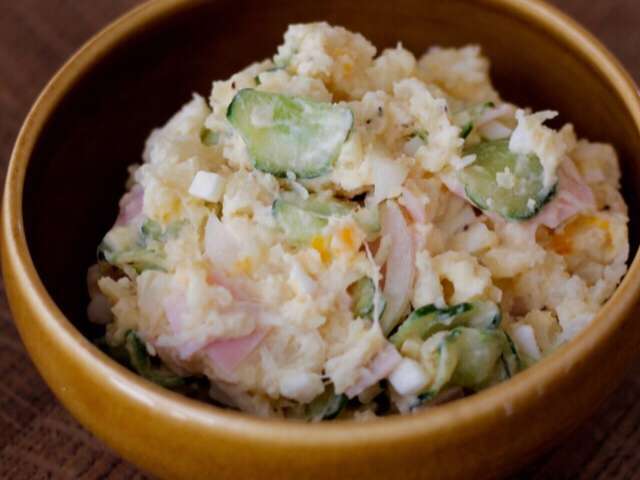


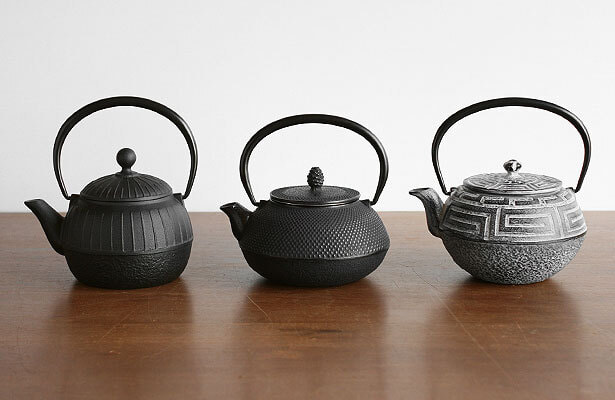










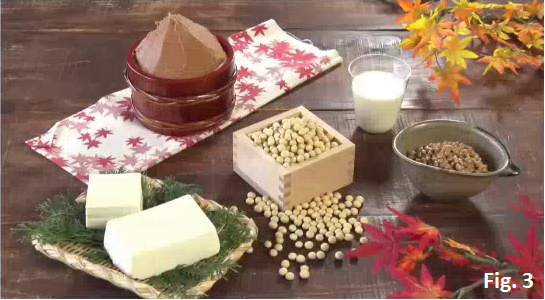



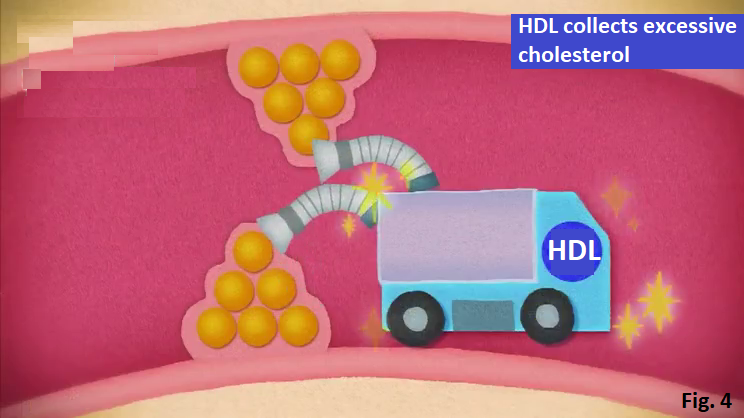









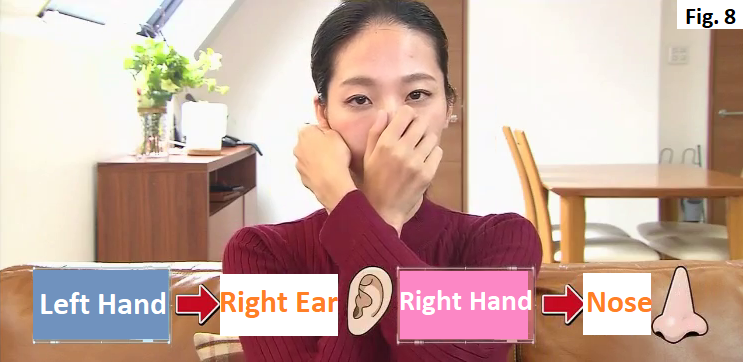
 RSS Feed
RSS Feed